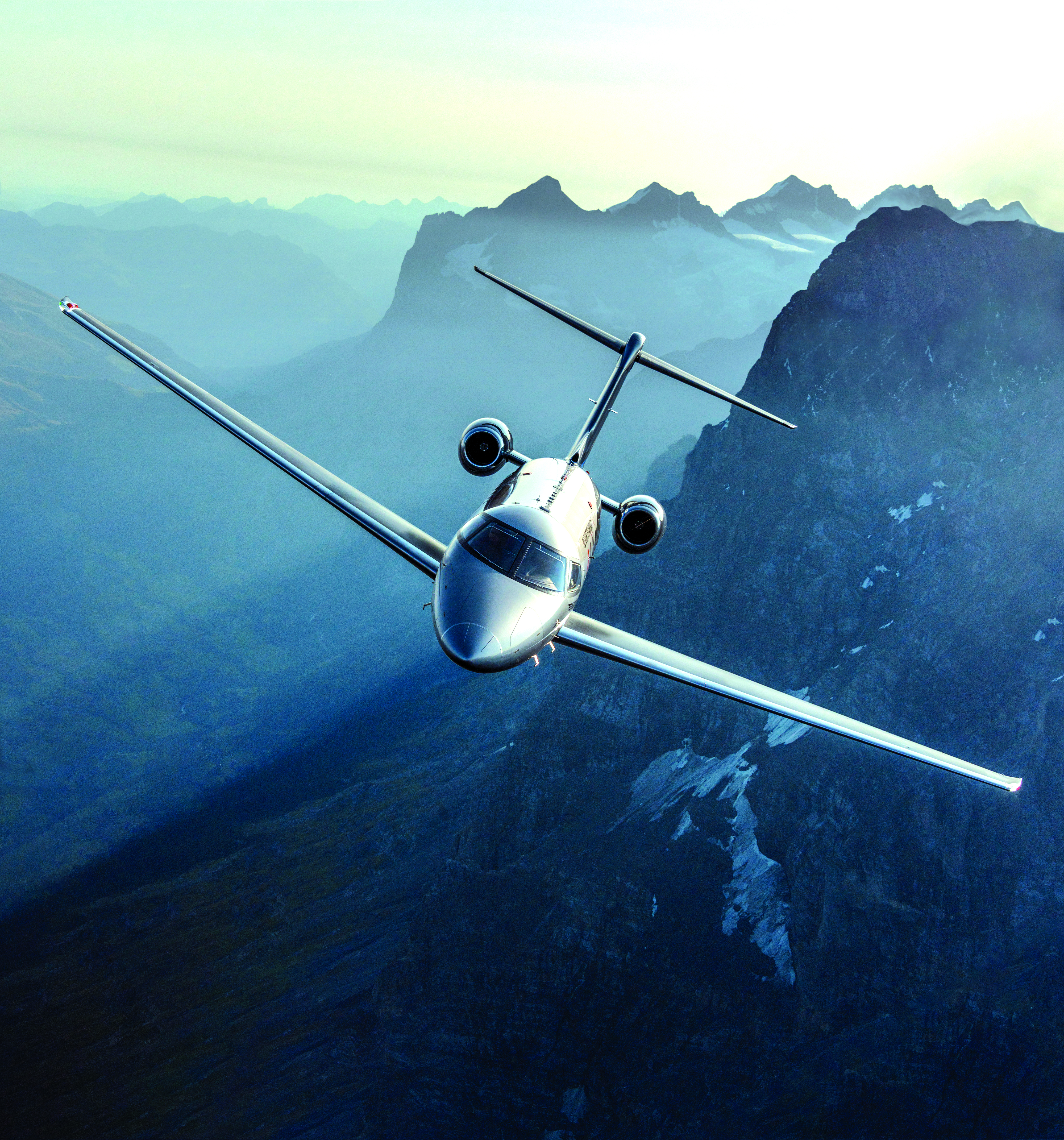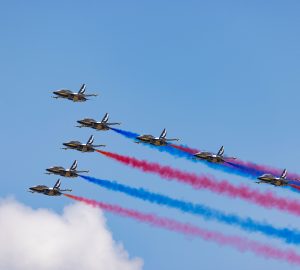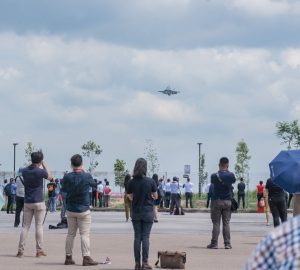Show Stoppers
We take a look at two of the most eagerly awaited business jets in 2018 — the Bombardier Global 7000 and the Pilatus PC-24.
by Jose Uy
If there’s anything gleaned from the static display at NBAA-BACE 2017, it’s that some things truly are worth waiting for. Several aircraft stood out, both for the anticipation built around them, and for the satisfaction of the actual display. Gulfstream unveiled a fully outfitted G600, and Embraer displayed the Phenom 300E, a version of the popular Phenom 300 with improved interior design.
The appearance of these aircraft buoyed the mood of this year’s NBAA convention and exhibition, which in itself had an inspiring note given the general aviation industry’s passionate aid of hurricane victims and its equally fervent stand against air traffic control privatization. We take a look at two of the most eagerly awaited aircraft on display — the Bombardier Global 7000 and the Pilatus PC-24.
BOMBARDIER GLOBAL 7000
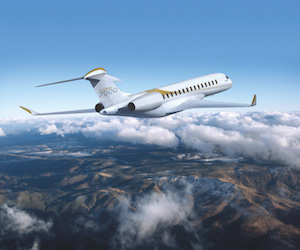
Seven years after it was first announced, the Global 7000 is finally nearing entry into service. Bombardier unveiled the fourth flight test vehicle (FTV) at the static display at Henderson Executive Airport, lending proof to its claim that the Global 7000 is the world’s largest purpose-built business jet. The 16.64-metre-long cabin features four zones, a galley, and a crew rest suite, and is capable of accommodating 19 passengers in comfort. Suites will be made to measure.
Even with its ultra-long range of 13,705 km (with NBAA IFR Reserves, ISA, LRC, eight passengers and four crew), the Global 7000 will have short field and high/hot capacity. Top speed is Mach 0.925, high speed at Mach 0.90, and typical cruise speed at Mach 0.85. This combination of range, field performance, and speed will allow the Global 7000 to unlock new routes and shorten flight time from typical city pairs London-Singapore and Los Angeles-Shanghai.

Specifications are currently approximate; Bombardier reported that the first FTV reached a flight speed of Mach 0.995 early in the test program. The Global 7000 test program will use five FTVs in all. Certification is expected in 2018, with deliveries soon to follow.
Its combination of range, field performance, and speed will allow the Global 7000 to unlock new routes
PILATUS PC-24
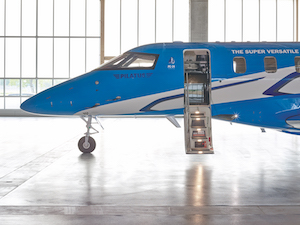
Pilatus’ faith in the uniqueness of the PC-24 was such that it named a new category of business jet, the ‘super versatile jet’ (SVJ). The OEM has good reason — the PC-24 will combine turboprop versatility with the cabin size of a medium-light jet and the performance of a light jet. This is the private jet that can navigate unpaved runways and short fields, yet nevertheless look quite at home parked next to the fanciest FBOs.
Pilatus notes that there are 10,650 and 1,300 airports in the world with paved runways that are at least 954 m (3,130 ft) and 820 m (2,690 ft), respectively. However, there are more than 21,000 runways around that are at least 820 m (2,690 ft) long but feature unpaved surfaces, such as grass or gravel — and that the typical private jet cannot access. This is the gap filled by the PC-24. That means that the next time you visit your favourite Big Five migration viewing camp in Africa or visit a remote business operation in Asia, you may be able to land your jet directly on the property’s private dirt strip.
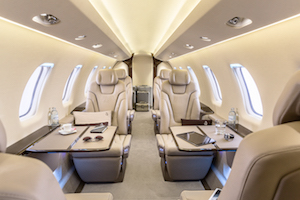
Interiors are important, too, and the Pilatus PC-24 cabin is roomy enough to offer several executive seating configurations and a separate door for cargo. Two other interesting features are that it is certified for single-pilot operation, and that it comes with a ‘Quiet Power Mode’ that cools or heats the aircraft on the ground under its own power. EASA and FAA certification are expected in December 2017.
The PC-24 is the private jet that can navigate unpaved runways and short fields
TECHNICAL SPECIFICATIONS
GLOBAL 7000 (The Global 7000 aircraft is currently under development and the design tolerances remain to be finalized and certified. All specifications and data are approximate.)
| SPECIFICATION | IMPERIAL | METRIC |
|---|---|---|
| LENGTH (EXTERNAL) | 111 FT 2 IN | 33.9 M |
| WINGSPAN | 104 FT 0 IN | 31.7 M |
| HEIGHT (EXTERNAL) | 27 FT 0 IN | 8.2 M |
| CABIN LENGTH | 54 FT 7 IN | 16.64 M |
| CABIN WIDTH | 8 FT 2 IN | 2.49 M |
| CABIN HEIGHT | 6 FT 3 IN | 1.91 M |
| MAXIMUM RANGE | 7,400 NM | 13,705 KM |
| NO. OF PASSENGERS | UP TO 19 | |
| TOP SPEED | MACH 0.925 | |
| MAXIMUM OPERATING ALTITUDE | 51,000 FT | 15,545 M |
| TAKEOFF DISTANCE (SL, ISA, MTOW) | 5,950 FT | 1,814 M |
| LANDING DISTANCE (SL, ISA, TYPICAL) | 2,810 FT | 856 M |
PILATUS PC-24
| SPECIFICATION | IMPERIAL | METRIC |
|---|---|---|
| LENGTH (EXTERNAL) | 55 FT 2 IN | 16.80 M |
| WINGSPAN | 55 FT 9 IN | 17 M |
| HEIGHT (EXTERNAL) | 17 FT 4 IN | 5.3 M |
| CABIN WIDTH | 5 FT 7 IN | 1.69 M |
| CABIN HEIGHT | 5 FT 1 IN | 1.55 M |
| RANGE (with 4 passengers, 800 lb payload, LRC, NBAA IFR reserves of 100 nm + 30 min VFR, LRC, single-pilot ops) | 1,950 NM | 3,610 KM |
| MAX. CRUISE SPEED (FLIGHT LEVEL 300) | MIN. 425 KTAS (787 KM/H) | |
| MAXIMUM CERTIFIED ALTITUDE | 45,000 FT | 13,716 M |
| TAKE-OFF DISTANCE | 2,690 FT | 820 M |
| LANDING DISTANCE OVER 50 FT OBSTACLE | 2,525 FT | 770 M |



